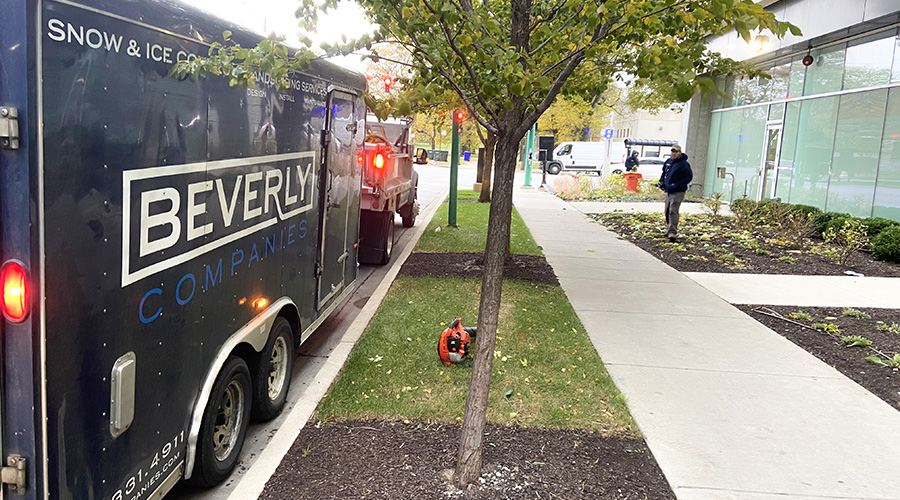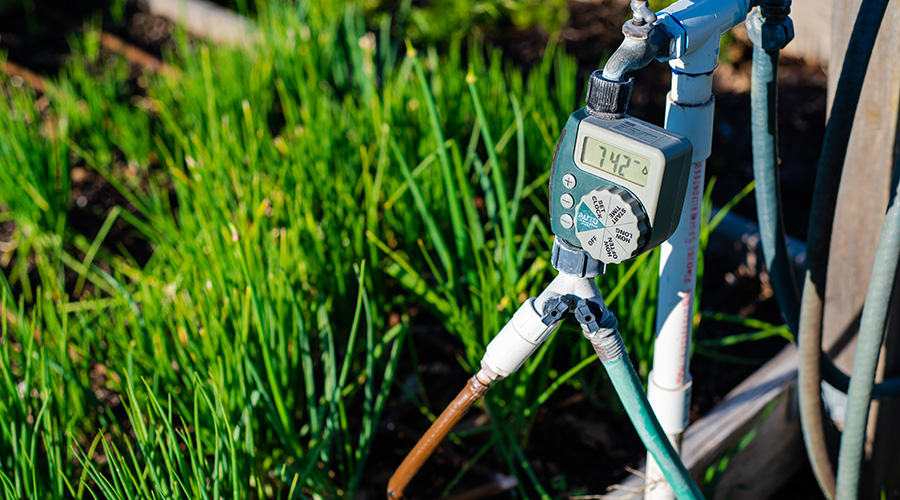Taking Control of Birds
Controlling unwanted birds around facilities calls for understanding threats to facilities and techniques to minimize the problem
Birds are among the most frustrating and pesky pests grounds care managers encounter. They are cute and loved by most people who see them, but they can create a public relations nightmare for management. Birds seem to be harmless intruders, but they can be dangerous and a public health threat.
To combat unwanted birds, managers can employ a number of techniques. In order to design a successful bird control program, managers also need to understand the threats birds pose and the available control options.
Spreading Sickness
Besides making a mess of beautiful building facades, birds such as pigeons can contribute to the spread of disease, such as histoplasmosis. This disease is most commonly associated with areas that are inhabited by birds, according to the Centers for Disease Control and Prevention (CDC), which warns of hazards associated with histoplasmosis.
The fungal disease exists in soil and bird droppings. Humans can contract it by touching bird droppings or infected soil, and it can be airborne. Symptoms are similar to those of influenza, including respiratory ailments, chest pains and a dry cough.
This disease can be painful and even fatal in certain cases. Diagnosis is possible, and an anti-fungal treatment regime usually provides complete recovery. While histoplasmosis is not an epidemic, it is a possible effect of established populations of birds where humans work and live.
Birds also can indirectly spread other diseases. For example, mosquitoes that sting birds can transmit West Nile virus. Even though birds do not spread West Nile virus directly, they serve as a reservoir that allows mosquitoes to spread this sometimes-fatal disease.
While a large bird population does not mean that anyone in the area will contact these diseases, a large and established population might increase the chances of contracting a disease.
And the disease threat is spreading. CDC reports a significant increase in West Nile virus in the past few years. Since investigators found it in the Eastern United States a few years ago, West Nile Virus has spread to most regions of the country.
Helping Hands
To control bird populations, occupants and visitors can help reduce attractiveness of facilities and grounds to roosting birds.
First, everyone in the area should be discouraged from feeding birds. Employees often enjoy their downtime by feeding birds. It is difficult to convince some employees that it is not a good idea to adopt these feathered pests.
The process of feeding birds leads them to establish the area as a source of food. Soon, their numbers swell. If unchecked, they can become a major pest population in short order.
Second, to keep birds under control and out of the area, managers can use exclusion techniques. Doors should remain closed, and windows should have screens. Warehouses and large commercial buildings, such as retail stores and airports, commonly have bird populations established inside, which originated when doors were left open.
If workers in these areas store or handle food, they are subject to visits by food inspectors, as the food might become contaminated. But if managers discourage bird populations outside, they also minimize the chances of them entering the buildings.
Third, managers should encourage building occupants to report sightings of unwanted birds immediately before the population becomes established. This helps managers gain control in the early stages. It is much less costly to control birds when the population is small than when the population becomes excessive.
Control Considerations
Bird control is best handled by trained in-house workers or outside professionals. Birds often live in difficult-to-reach areas and, considering the disease potential, workers in some situations must take safety precautions, including use of special respirators.
Managers have many techniques at their disposal to discourage birds from roosting and establishing habitats. Most of these techniques are physical and might require the use of specialized aerial equipment.
Managers can use wires and spikes designed exclusively for bird control. Workers place these products at strategic locations on roofs, ledges and balconies to prevent birds from roosting or resting on these structures.
The devices vary in design, but they all have the same concept — wires, spikes and other physical barriers are uncomfortable for birds. Some of these devices are electrified with low voltages, which does not harm the bird but acts as an electric fence to keep the birds out of the area.
Some paste-type products repel birds, in that they would roost in an uncomfortable mass of material. Managers can use these products with physical barriers or as standalone applications, and they might consider using them inside buildings.
Managers also have used scaring devices — horns, shot whistles, balloons, and plastic figurines of predator birds, with limited success.
If workers do not move these devices from time to time or maintain them properly, the birds quickly get used to them.
For example, a large food company recently installed a chirping device but did not move it regularly. Birds became so unintimidated that they built a nest on the device. Clearly, workers cannot simply install these devices, leave them alone and expect the intended result. Some managers have used ultrasonic devices, but no data exists to support their effectiveness.
Managers also have used use nets in open areas, such as near pavilions, covered exterior picnic areas and pools. The goal of the netting is to exclude birds without disrupting the scenery. The design of the architecture often is the deciding factor in deciding whether to use this technique.
Managers dealing only with pigeons in protected areas can consider using bird food containing an active ingredient that causes birds to suffer temporary indigestion and give warning signals to other birds. But only a licensed pest-control company should apply this restricted-use product.
Whether exterior or interior, some birds are protected. So it is important for managers to identify the type of bird to get a better understanding of what actions are permitted by law. In frustration, some managers might want to take matters into their own hands. This is dangerous and may be illegal in certain jurisdictions.
Depending on the type of building and the type of bird, managers also might consider physical exclusion and trapping. This process can be labor intensive and usually is used only after sealing, physical barriers, and other methods have been tried and failed. The key is to prevent exterior bird populations from becoming established as a way to minimize the threat of interior problems.
Selecting a Professional
Bird control is a specialty in pest control, and some managers have turned to outside professionals. Not all companies take on bird control because it often requires special equipment, licensing, and training. If the pest control company serving a building does not perform bird control work, a manager can look for firms that have:
- state licenses covering bird control
- adequate insurance
- extensive experience, especially with the particular type of facilities.
Companies also should provide references. The National Pest Management Association has developed tips for how to find a pest control company, as well as consumer message board where technical experts answer specific questions.
Greg Baumann is technical director with the National Pest Management Association.
Related Topics:











